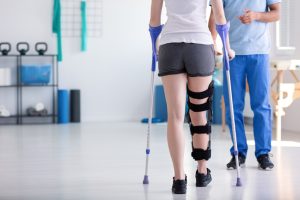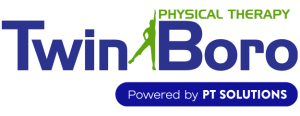Do you live or work near Martinsville, NJ? Twin Boro Physical Therapy in Martinsville offers innovative physical therapy methods “near me” to help residents optimize their movements and decrease uncomfortable symptoms.

Twin Boro Physical Therapy was established in 1980 and quickly became a prominent fixture in the New Jersey community. With 51 locations across 16 counties, residents across the state have convenient access to high quality care. Thanks to our dedication to patient success and positive outcomes, we have been able to expand to be the largest private physical therapy network in New Jersey. When you join our team, you are joining a motivated community of patients and professionals dedicated to living their best life.
What is a Dowager’s hump?
A dowager’s hump is a nickname for the slightly rounded hump that is commonly seen at the base of the neck in elderly women and men. The medical term for this hump is kyphosis, which refers to a forward-leaning posture. This develops over time from poor posture habits, such as chronically looking downwards at a phone or computer screen. When this happens, an abnormal curve can develop in the upper vertebrae. This leads to a mass of tissue forming at the base of the neck.
What causes kyphosis?
While poor posture habits over time are the most common cause of kyphosis, there are several other causes that may lead to this occurrence.
Osteoporosis can lead to compression fractures in the spine, which leads the head to drop forward abnormally. Over time, the repeated movements of dropping the head and then pulling it back to look up can cause the hump to form.
Congenital abnormalities are another cause of kyphosis, including irregular spine formation. For teenagers, Scheuermann’s kyphosis may cause kyphosis from spine development into a wedge shape rather than a rectangular shape.
When does kyphosis occur?
If kyphosis does not result from a genetic abnormality, it is most often seen in middle age or older. This is because it develops over time from the weakening of the thoracic extensor muscles.
How can kyphosis be prevented?
Kyphosis can largely be prevented by maintaining good posture. Try to avoid chronically leaning forward, which can cause back pain and irregularities in the disk. Leaning forward also strains the back and neck by putting extra weight on delicate tissues.
Another method to prevent kyphosis is to monitor for signs of osteoporosis and take steps to minimize compression of the disks. This can prevent progression early and reduce kyphosis.
How do you treat kyphosis?
Kyphosis can often be improved or reversed, depending on the cause and severity. Strengthening the upper back muscles and increasing shoulder strength can help keep the head and neck in alignment. In addition to this, exercises such as scapular squeezes and chin tucks can promote good posture.
If you are worried about signs of kyphosis and believe you may benefit from targeted physical therapy, our therapists at Twin Boro Physical Therapy can assess your current condition and develop a plan to target areas of concern.
Ready to begin?
Twin Boro Physical Therapy is here to help the New Jersey community look, move, and feel their best. To get started “near me” at our Martinsville office, residents of New Jersey should contact our Twin Boro Physical Therapy Martinsville office today by calling 732.552.0275 or visiting our website.

